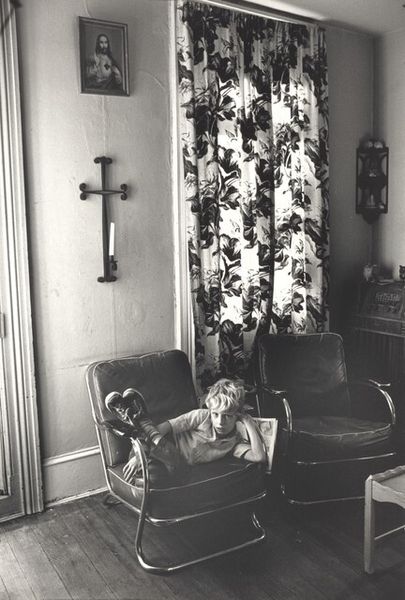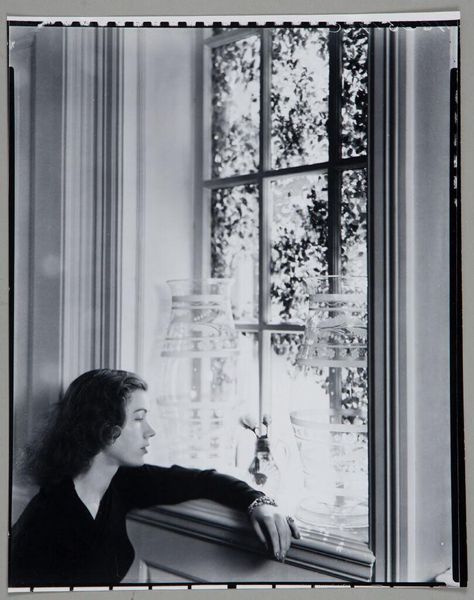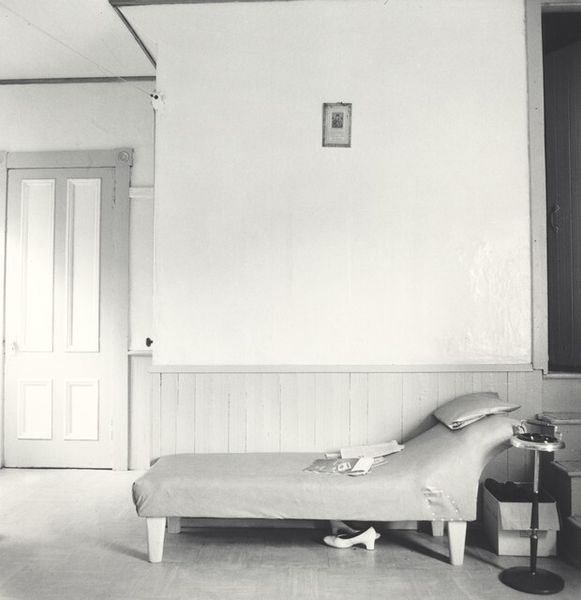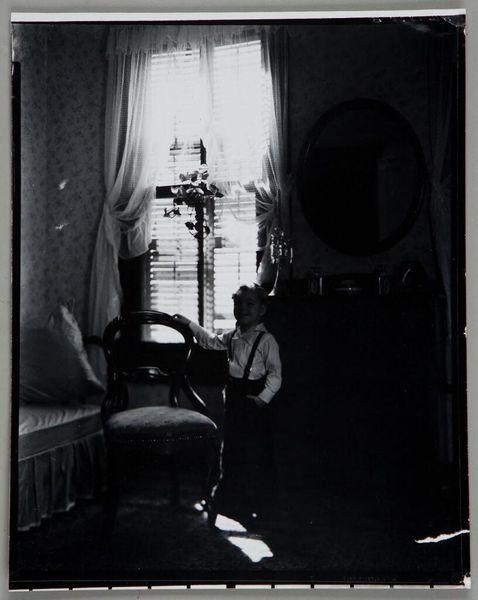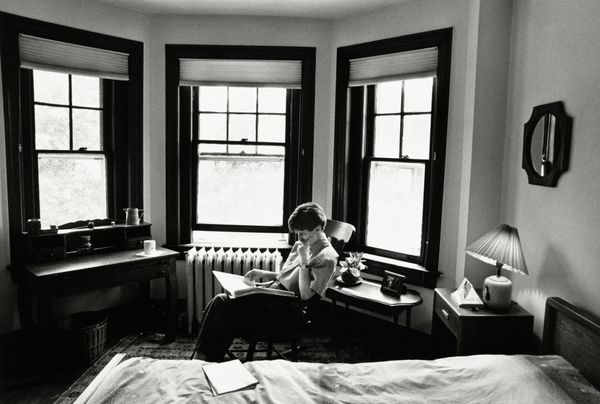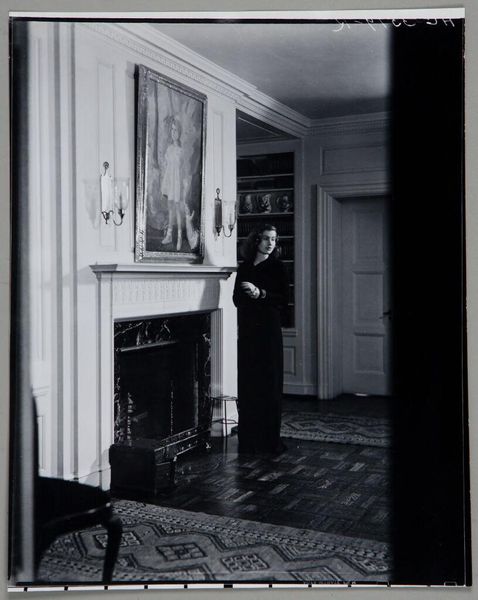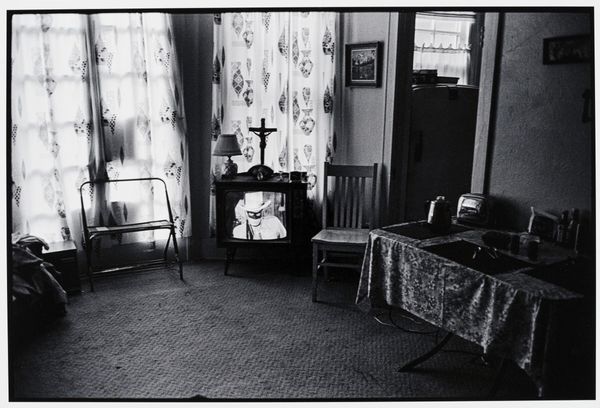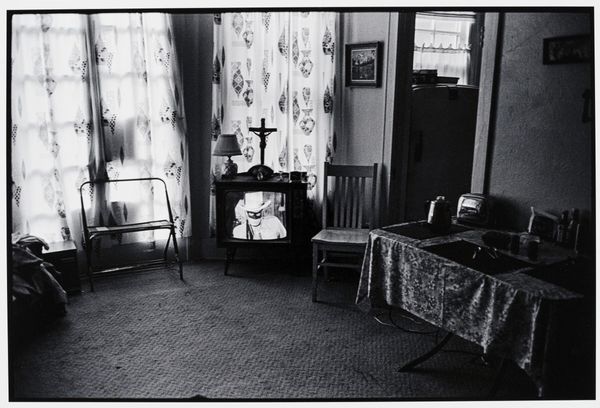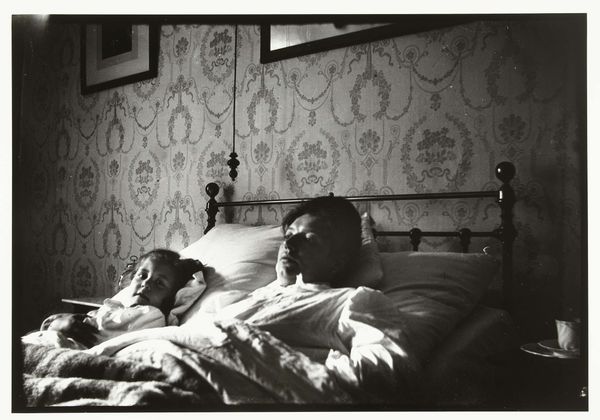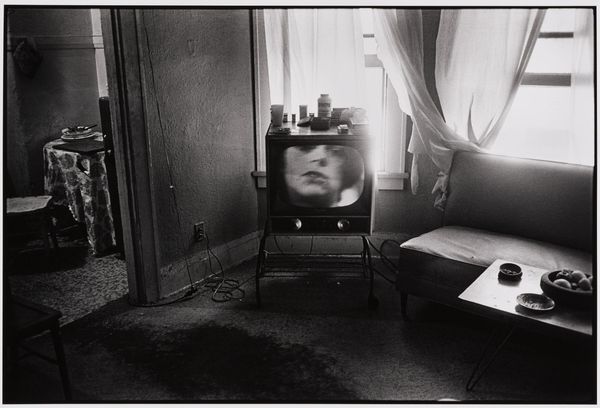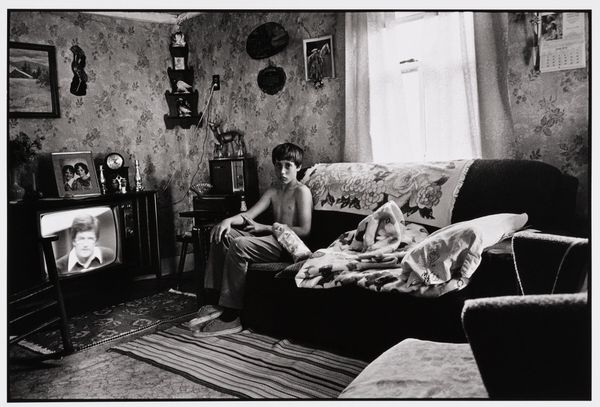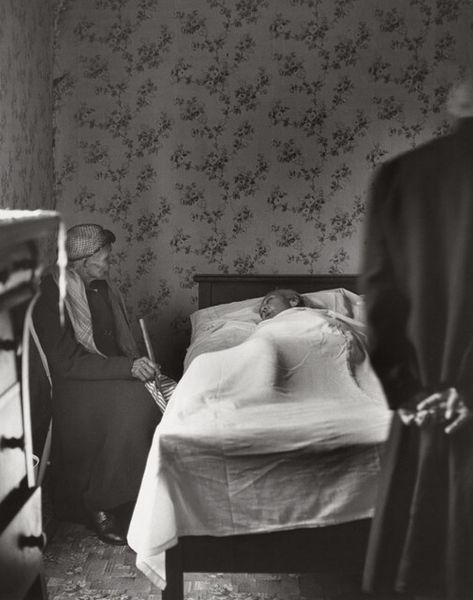
photography, gelatin-silver-print
#
portrait
#
black and white photography
#
photography
#
black and white
#
gelatin-silver-print
#
ashcan-school
#
monochrome
#
realism
Dimensions: image: 19.05 × 29.21 cm (7 1/2 × 11 1/2 in.) sheet: 27.94 × 35.56 cm (11 × 14 in.)
Copyright: National Gallery of Art: CC0 1.0
Curator: This gelatin-silver print is entitled "Miriam and Cutout, Chicago." Richard Gordon potentially captured it sometime between 1973 and 1994. I am immediately struck by how the black and white tones cast this piece with melancholy. What’s your initial take? Editor: It does evoke a sense of stillness and perhaps isolation, doesn't it? The composition is interesting. We see a young woman, Miriam, seated on a sofa that’s covered in plastic. Next to her, on a small table, is what appears to be a photographic cutout of a child. The scene is stark, yet intimate. Curator: Indeed. That protective plastic speaks volumes about preservation and a sense of stasis, as if warding off change or decay. And then you notice how the baby looks directly at the camera, while Miriam stares into the void. Don’t you think it may represent different types of engagement with the world? One naive, and one subdued and disillusioned? Editor: It's certainly a poignant contrast. The presence of the child's image brings up questions about representation itself – How do we preserve memories? What is real and what is staged? The choice of black and white further heightens that sense of distance, as if looking back at a bygone era through memory’s lens. Think of the Ashcan School! Curator: Precisely. It harkens back to those social documentary traditions, revealing raw textures of daily life—yet here filtered through Gordon's subjective perspective. Even the seemingly banal details like the lamp, and the landscape art on the wall take on a symbolic resonance. Are those aspirations, illusions or ironic decorations to that rather subdued interior design? Editor: Those details are crucial. That domestic setting, the objects that populate the frame, they speak to socio-economic status and personal histories. It's tempting to weave a narrative around the photograph. For instance, I am intrigued by that shiny cable going up to the lamp: is there an unseen electrical socket just outside our sight? Curator: All these subtle cues add to the image's narrative potential, offering layers for contemplation and projecting unspoken feelings. How photographs work as silent witnesses… a powerful reminder of life's inherent complexities, right? Editor: Definitely. What Gordon's work makes clear is how the politics of representation inevitably shape the public role of art— even in the most intimate scenes. Curator: A fitting thought to conclude on; thanks! Editor: Agreed.
Comments
No comments
Be the first to comment and join the conversation on the ultimate creative platform.
